QGradient Class Reference |
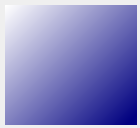 | 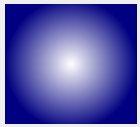 | 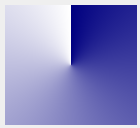 |
| QLinearGradient | QRadialGradient | QConicalGradient |
|---|
The colors in a gradient is defined using stop points of the QGradientStop type, i.e. a position and a color. Use the setColorAt() function to define a single stop point. Alternatively, use the setStops() function to define several stop points in one go. Note that the latter function replaces the current set of stop points.
It is the gradient's complete set of stop points (accessible through the stops() function) that describes how the gradient area should be filled. If no stop points have been specified, a gradient of black at 0 to white at 1 is used.
A diagonal linear gradient from black at (100, 100) to white at (200, 200) could be specified like this:
QLinearGradient linearGrad(QPointF(100, 100), QPointF(200, 200));
linearGrad.setColorAt(0, Qt::black);
linearGrad.setColorAt(1, Qt::white);
A gradient can have an arbitrary number of stop points. The following would create a radial gradient starting with red in the center, blue and then green on the edges:
QRadialGradient radialGrad(QPointF(100, 100), 100);
radialGrad.setColorAt(0, Qt::red);
radialGrad.setColorAt(0.5, Qt::blue);
radialGrad.setColorAt(1, Qt::green);
It is possible to repeat or reflect the gradient outside its area by specifiying the spread method using the setSpread() function. The default is to pad the outside area with the color at the closest stop point. The currently set spread method can be retrieved using the spread() function. The QGradient::Spread enum defines three different methods:
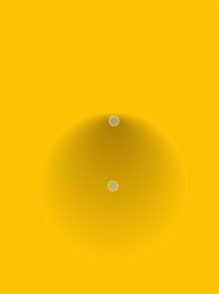 |  | 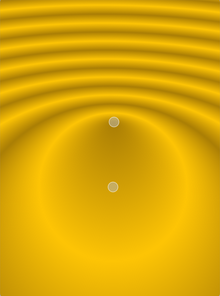 |
| PadSpread | RepeatSpread | ReflectSpread |
Note that the setSpread() function only has effect for linear and radial gradients. The reason is that the conical gradient is closed by definition, i.e. the conical gradient fills the entire circle from 0 - 360 degrees, while the boundary of a radial or a linear gradient can be specified through its radius or final stop points, respectively.
See also The Gradients Demo and QBrush.
Member Type Documentation
enum QGradient::Spread
Specifies how the area outside the gradient area should be filled.
| Constant | Value | Description |
|---|---|---|
| QGradient::PadSpread | 0 | The area is filled with the closest stop color. This is the default. |
| QGradient::RepeatSpread | 2 | The gradient is repeated outside the gradient area. |
| QGradient::ReflectSpread | 1 | The gradient is reflected outside the gradient area. |
See also spread() and setSpread().
enum QGradient::Type
Specifies the type of gradient.
| Constant | Value | Description |
|---|---|---|
| QGradient::LinearGradient | 0 | Interpolates colors between start and end points (QLinearGradient). |
| QGradient::RadialGradient | 1 | Interpolate colors between a focal point and end points on a circle surrounding it (QRadialGradient). |
| QGradient::ConicalGradient | 2 | Interpolate colors around a center point (QConicalGradient). |
| QGradient::NoGradient | 3 | No gradient is used. |
See also type().
Member Function Documentation
void QGradient::setColorAt ( qreal position, const QColor & color )
Creates a stop point at the given position with the given color. The given position must be in the range 0 to 1.
See also setStops() and stops().
void QGradient::setSpread ( Spread method )
Specifies the spread method that should be used for this gradient.
Note that this function only has effect for linear and radial gradients.
See also spread().
void QGradient::setStops ( const QGradientStops & stopPoints )
Replaces the current set of stop points with the given stopPoints. The positions of the points must be in the range 0 to 1, and must be sorted with the lowest point first.
See also setColorAt() and stops().
Spread QGradient::spread () const
Returns the spread method use by this gradient. The default is PadSpread.
See also setSpread().
QGradientStops QGradient::stops () const
Returns the stop points for this gradient.
If no stop points have been specified, a gradient of black at 0 to white at 1 is used.
See also setStops() and setColorAt().
Type QGradient::type () const
Returns the type of gradient.
bool QGradient::operator== ( const QGradient & gradient )
Returns true if the gradient is the same as the other gradient specified; otherwise returns false.
Related Non-Members
typedef QGradientStop
Typedef for QPair<qreal, QColor>.
typedef QGradientStops
Typedef for QVector<QGradientStop>.
| Cette page est une traduction d'une page de la documentation de Qt, écrite par Nokia Corporation and/or its subsidiary(-ies). Les éventuels problèmes résultant d'une mauvaise traduction ne sont pas imputables à Nokia. | Qt 4.1 | |
| Copyright © 2012 Developpez LLC. Tous droits réservés Developpez LLC. Aucune reproduction, même partielle, ne peut être faite de ce site et de l'ensemble de son contenu : textes, documents et images sans l'autorisation expresse de Developpez LLC. Sinon, vous encourez selon la loi jusqu'à 3 ans de prison et jusqu'à 300 000 E de dommages et intérêts. Cette page est déposée à la SACD. | ||
| Vous avez déniché une erreur ? Un bug ? Une redirection cassée ? Ou tout autre problème, quel qu'il soit ? Ou bien vous désirez participer à ce projet de traduction ? N'hésitez pas à nous contacter ou par MP ! | ||
Copyright © 2000-2012 - www.developpez.com



















